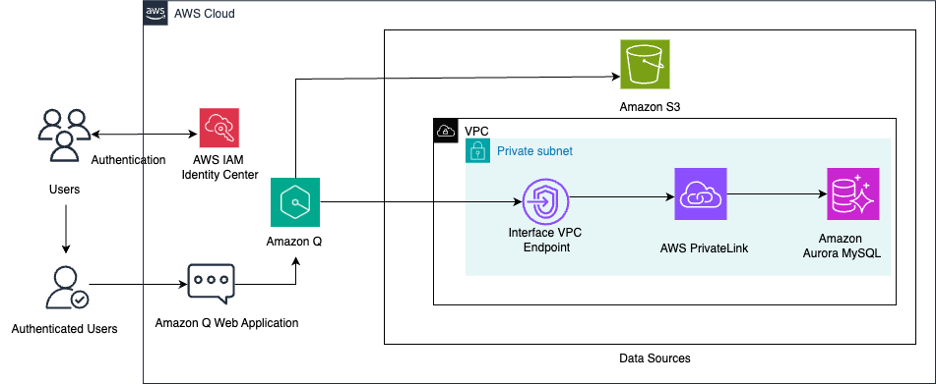In this exclusive interview, we sit down with Dan Maloney, CEO of LandingAI, to explore his journey through the high-tech landscape and his vision for the future of AI-driven solutions. With over 20 years of experience in startups and global enterprises, Dan offers a deep dive into pivotal moments that have shaped his leadership style, the integration of key business functions for cohesive strategy, and the critical role of AI and automation in maintaining competitive advantage. Join us as we uncover how LandingAI is navigating the challenges of analytics, fostering innovation, and setting a strategic course for the future.
Dan, you have over 20 years of experience in high-tech startups and global companies. Can you share a pivotal moment in your career that significantly shaped your leadership style?
Reflecting on my 20-year career, I recognize numerous factors that have significantly influenced and continually shaped my approach to leadership. A pivotal moment was during my tenure at TopTier Software, an early-stage startup. This experience was instrumental in teaching me the critical importance of agility, hard work, and innovation in bringing new solutions to a competitive market. More importantly, it underscored the value of partnerships in navigating a young company through the complexities of a technology-saturated landscape and into the enterprise sector.
However, my leadership journey took a fascinating turn when TopTier Software was acquired by SAP, one of our key partners. This transition from a nimble startup of 200 employees to a global enterprise with a workforce of 40,000 to 50,000 presented a unique set of challenges and learning opportunities. It was here that I learned the importance of adapting my leadership style. While the drive for innovation, leading by example, and motivating the team remained crucial, I also had to embrace and understand the diverse cultural dynamics within SAP. Recognizing that innovation alone wasn’t sufficient, I learned to value the longstanding trust and relationships SAP had established with its customers over its 30-year history.
Throughout my career, spanning startups to large corporations, the constant has been the adaptability of my leadership style. This adaptability was not just about leading teams but also about understanding and integrating into the broader ecosystem of each organization. This early lesson has been fundamental in enabling me to effectively lead and navigate through the diverse challenges and opportunities presented by both small and large companies. The essence of my leadership style, therefore, lies in its fluidity and responsiveness to the surrounding environment, a principle I learned early on and have continued to refine throughout my career.
With your diverse background in sales, marketing, business development, and product, how do you approach integrating these functions to drive a cohesive business strategy?
Throughout my journey to becoming a CEO, and indeed, a multiple-time CEO, I’ve had the opportunity to immerse myself in virtually every facet of business operations – from product development, consulting, and sales to marketing, building ecosystems, and managing operations. This diverse experience has equipped me with a unique perspective; I’ve essentially walked in the shoes of every team member across these functions. This has not only deepened my understanding of the critical role each function plays in building not just a successful product but a thriving company, but also how vital it is for every team to comprehend their contribution towards our unified strategy.
Executing a great business strategy extends beyond its creation; it’s about ensuring every group within the company understands their role and how they contribute to our collective goals. This understanding is particularly crucial in startups, where resources are lean and every effort must be precisely aligned with the company’s objectives.
Take partnerships, for example. Forming alliances with major software vendors or system integrators sounds promising, but it demands readiness on our part. It’s critical to assess whether our product and engineering teams are equipped to collaborate and integrate with our partners effectively. Introducing new dynamics into the organization necessitates a preparedness to not only welcome but also to synergize with these new relationships positively.
My extensive experience across different business functions has been instrumental in crafting cohesive strategies that not only align internal efforts but also ensure our company can effectively engage with customers, partners, and other stakeholders. The advantage I bring to the table is my ability to not just devise strategic plans but also guide our teams in executing these strategies effectively. This blend of strategic oversight and tactical guidance has been a cornerstone of my leadership approach, fostering a culture of collaboration and success across the organizations I’ve led.
AI and automation are transforming the business landscape. From your perspective, what are the most critical changes businesses need to adopt to stay competitive?
In the rapidly evolving landscape of technology, particularly with the advancements in AI and automation, companies are constantly seeking ways to streamline their business processes, reduce costs, and explore new monetization opportunities enabled by these technologies. What has particularly struck me is the remarkable pace at which AI is transforming industries. This isn’t just about the advancements in hardware that underpin these technologies but also about how quickly new business processes can be adapted and optimized, a pace that’s accelerating like never before.
For companies to not only survive but thrive in this environment, it’s crucial to have a system in place for evaluating and integrating new technologies. This requires a delicate balance between being open to change and rigorously testing new technologies, while also ensuring these innovations can be seamlessly incorporated into the core operations to drive real value.
I’ve observed that companies often fall into one of two categories: those that are constantly experimenting with new technologies but struggle to operationalize them, and those that are overly cautious, waiting for others to take the lead before adopting new technologies themselves. Both approaches have their pitfalls; the former can lead to inefficiency and wasted resources, while the latter may risk the company’s very survival by failing to keep pace with industry advancements.
The key, then, is to establish a framework that allows a company to efficiently test new technologies and, crucially, transition successful pilots into full-scale production. This is no small feat and requires a collaborative effort with software vendors, system integrators, and the company’s strategy team. It’s about creating a culture that not only embraces change but also has the processes and structure in place to leverage it effectively.
In today’s fast-moving technological world, this adaptability and willingness to innovate are not just strategies for staying competitive; they are essential for business survival. Companies that fail to adopt this approach will find it increasingly difficult to maintain their market position, let alone expand it.
Can you discuss a recent project at LandingAI that you’re particularly proud of and explain how it reflects the company’s new direction?
I’ve had the privilege of being involved in numerous projects, both customer-facing and internal, that have filled me with immense pride. However, one project holds a special place in my heart due to my direct involvement and the duration of our partnership. This project is with a company at the forefront of the automotive industry, specifically focusing on electric vehicles and the development of lithium-ion batteries.
What sets this collaboration apart is our journey with them over several years, particularly since the early adoption of our core platform product, the LandingLens, nearly three years ago. The enthusiasm I felt working closely with this company was unparalleled. We were not only able to receive their feedback but also rapidly integrate it into our product. This dynamic process was exhilarating, as it involved us initially leveraging what was then considered state-of-the-art computer vision technology. However, as we progressed, we encountered new challenges and learned to adapt by evolving our technology towards a more sophisticated visual AI approach. This included incorporating generative AI techniques, domain-specific LVMs, and creating new experiences that allowed various user personas to harness AI for automation more effectively.
The journey wasn’t without its challenges, but the value we delivered through our perseverance was undeniable. It’s a testament to the unique position we found ourselves in—being the only ones capable of supporting their innovative needs. While it’s not uncommon to face difficulties with early adopters, often resulting in the loss of those initial customers for the benefit of future ones, our story was different. We managed to not only retain this customer but also cultivate a multi-year relationship that stands as a testament to our technological advancements and our commitment to customer success.
This collaboration has been a remarkable success story, showcasing the impact of our technology and the depth of our customer relationships. It’s a vivid illustration of how we can drive significant value for our clients and solidify long-term partnerships that contribute to their ongoing success. Truly, an incredible journey.
As someone with extensive experience in enterprise software, what are the biggest challenges you see companies facing with analytics and mobility today?
The challenge of managing and leveraging data is not new, yet it’s becoming increasingly complex and expansive. Today, companies are generating and ingesting an unprecedented volume of data, both structured and unstructured, which constitutes 80 to 90{7df079fc2838faf5776787b4855cb970fdd91ea41b0d21e47918e41b3570aafe} of the world’s data. This proliferation of data presents significant hurdles, including data silos, accessibility issues, and the need for sophisticated tools capable of extracting meaningful insights from this vast ocean of information. The task of navigating through images, documents, and various data points to consume and utilize data effectively is more daunting than ever.
Fortunately, the landscape is evolving. Thanks to advancements in computing power, AI technology, and specifically, the emergence of generative AI, we now have at our disposal tools that significantly enhance our ability to access, understand, and interact with data. These innovations are not only making it possible to tackle the complexities of data management but are also simplifying the user interface, allowing for more intuitive interaction with software systems.
Reflecting on the evolution of software over the past two decades, we’ve moved from complex and cumbersome interfaces to more user-friendly and intuitive designs. This shift is emblematic of the broader transition from what might be termed ‘Software 2.0’ to ‘Software 3.0’, where the focus is on hiding the complexity of operations behind seamless, easy-to-use interfaces. This transformation is also evident in the progression from traditional supervised learning models to the more sophisticated and versatile generative AI models.
We’re currently at a pivotal moment in the digital transformation journey. Enterprises are navigating a significant paradigm shift, adapting to these new technologies and methodologies to stay competitive and relevant. It’s a challenging period, but also an incredibly exciting one, as we witness and contribute to the evolution of technology that is reshaping the way businesses operate and how they leverage data to drive decision-making and innovation.
How do you foster innovation within your teams, and what strategies do you use to keep your teams motivated and aligned with company goals?
At LandingAI, under Andrew’s leadership, along with the invaluable contributions from Daniel and our deep tech and engineering teams, we’ve cultivated an exceptionally innovative culture. This culture is not just confined to our product and engineering departments but permeates the entire organization.
One of the core practices that exemplify our commitment to innovation is allocating dedicated time for our Machine Learning Engineers (MLEs) and engineers to explore the latest models and experiment with new concepts. This practice has been a fundamental aspect of our company ethos from the beginning. However, what has truly accelerated our pace of innovation is the dynamic partnership between Andrew and myself. Together, we’ve been able to fast-track innovation across all facets of the company, not just in product development and engineering but also in our go-to-market strategies. This includes pioneering pricing strategies, exploring novel commercialization models, and forging unconventional partnerships and collaborations.
We’ve fostered a culture that encourages R&D across the board, enabling rapid research and innovation not just in our products but in every aspect of our business. This is often achieved by empowering individuals or small teams with the autonomy to pursue new ideas and experiments. Our approach to innovation is holistic, encompassing AI advancements as well as commercial strategies.
To ensure these innovative efforts are aligned and motivated, we employ two key strategies. First, we maintain a regular cadence of communication, whether through asynchronous or synchronous meetings, both virtual and in-person, to stay abreast of ongoing projects and developments. Second, our communication strategy is comprehensive, encompassing bi-weekly all-hands meetings where we revisit our overarching goals, track our progress, and ensure everyone is aligned and informed.
This open line of communication extends across departments, ensuring that insights and updates from the product and engineering teams are shared with the go-to-market teams and vice versa. This holistic understanding fosters a cohesive environment where everyone is aware of how their work interconnects and contributes to our collective goals.
In essence, at LandingAI, we’ve created an ecosystem where innovation is not just encouraged but is a fundamental aspect of our daily operations, driving us towards achieving our mission and vision.
In terms of IT operations and security, what emerging trends do you believe will have the most significant impact in the next five years?
In today’s digital landscape, particularly from the perspectives of IT operations, DevOps, and DevSecOps, the interplay between data and AI has become a pivotal area of focus. The crux of the matter revolves around the access and authorization to use data, which is the lifeblood of AI systems. This encompasses several critical considerations, such as ensuring appropriate permissions are in place for using data, whether it’s data procured commercially or customer data utilized internally to enhance AI models.
The governance surrounding data usage, data security, and AI model training is becoming increasingly complex. AI’s insatiable appetite for data introduces new challenges and considerations, especially in the context of regulatory compliance and governance. The involvement of governmental bodies, both at local and federal levels, and even on a global scale, adds another layer of complexity to navigating these challenges.
Looking ahead, the next five years will be pivotal in understanding the true value of data, as we shift from an era where data was freely available to one where data is considered a valuable asset, potentially to be monetized. This transition raises important questions about the risks associated with data acquisition and usage, and the potential impact on businesses.
The debate between stringent governance to ensure security and privacy versus a more open approach to foster innovation is at the heart of this issue. Too much regulation might hinder innovation, while too little could pose security risks and other vulnerabilities. This delicate balance between innovation and regulation is what I see as the most significant challenge and area of concern in the near future. It’s a positive development that these issues are coming to the forefront, signaling a maturing understanding of the implications of data and AI. However, it’s clear that this is a complex issue that will require thoughtful navigation to strike the right balance, ensuring both the advancement of technology and the protection of data and privacy.
Could you elaborate on how AI and automation can enhance business development efforts and improve sales outcomes?
AI and automation are not just enhancing operational efficiencies; they’re fundamentally transforming business models. We’re witnessing the emergence of innovative monetization strategies, fueled by the reevaluation of data assets. Companies are realizing that data previously retained for compliance purposes or considered valuable solely for creative endeavors, like images or videos, can now serve as a goldmine for training AI models. This shift is unlocking new revenue streams and business models, particularly for those in the AI sector, offering unprecedented access to data for enterprises embarking on their AI journey.
Interestingly, we’re seeing established companies, some with histories spanning over a century, venturing into the digital age with renewed vigor. These organizations are leveraging their rich data reserves and burgeoning software capabilities to develop proprietary software and AI applications. This not only marks their entry into new business domains but also enables them to monetize these innovations, often through collaborations with cloud service providers and platforms like Snowflake, Databricks, and others that host their own marketplaces.
The excitement around AI, automation, and the strategic use of data is palpable across all sectors. It’s driving innovation not just in product development but also in sales strategies, business development, and market penetration techniques, leading to the creation of new revenue streams. The impact on sales outcomes can be significant. While some initiatives may be experimental and not all will succeed, those that do have the potential to redefine how companies have generated revenue for decades, possibly offering more substantial returns than traditional methods.
In essence, as companies deepen their understanding of AI and data’s potential, we’re standing on the brink of a revolution in business practices. The opportunities for innovation, growth, and monetization are vast, heralding a new era of digital transformation that could reshape industries for years to come.
LandingAI has taken a new direction under your leadership. Can you share your vision for the company and how you plan to achieve it?
Over the past two years, my partnership with Andrew has been a journey of close collaboration and mutual discovery. Andrew’s profound expertise and passion for deep tech and AI innovations complement my role as COO, where I focus on the broader operational aspects of the company. Together, we’ve been able to seamlessly integrate cutting-edge technology into our go-to-market strategies, fostering a culture of rapid innovation and exploring new partnerships that were previously beyond our horizon. This synergy has naturally accelerated our growth trajectory.
Our efforts have significantly expanded our go-to-market channels and uncovered novel monetization opportunities through AI and automation. The vision for LandingAI is clear and ambitious. We’ve evolved from our initial focus on computer vision and manufacturing automation to developing a versatile visual AI platform. This platform adopts a generative AI-first approach, capable of solving a wide array of problems across various industries and functions. Unlike traditional systems that require specific conditions like optimal lighting or specialized equipment, our technology can analyze and leverage imagery from virtually any source, including satellite and drone footage. This flexibility opens up a plethora of applications, from enhancing existing video data to enabling new forms of automation and efficiency across different sectors.
With the right team, technology, and partnerships, we’re well on our way to becoming a dominant force in the industry. A key part of our strategy involves making our platform more accessible and adaptable. Since joining forces with Andrew, we’ve initiated a shift towards a more open platform, starting with a go-to-market strategy that encourages users to try our product for free, thereby facilitating their transition from individual users to large enterprises. Furthermore, we’re committed to open-sourcing critical components of our technology, like VisionAgent, which we’ll elaborate on in the future. This approach not only accelerates our innovation by welcoming contributions from the broader community, including academia and other enterprises but also fosters a symbiotic relationship that elevates the entire visual AI and computer vision industry.
Our collaboration is not just about advancing LandingAI but also about pushing the boundaries of what’s possible with Visual AI, creating a more open, innovative, and inclusive future for the technology and its applications.
Reflecting on your journey, what advice would you give to aspiring tech entrepreneurs looking to build high-growth, profitable businesses in today’s market?
We are living in an unprecedented era of innovation and speed. The ability to bring a great idea to market faster than ever before is not just exciting; it’s transformative. This rapid pace of development presents both incredible opportunities and unique challenges. Historically, from the mainframe era to the client-server model, and now to the internet and cloud computing, each technological leap has opened new avenues for those able to harness these innovations to serve customers more efficiently, reduce market friction, and generate new revenue streams.
Today, we are witnessing an even more dynamic shift. Companies can be launched and scaled with significantly fewer resources and less capital than in the past. This democratization of entrepreneurship means that great products and services can be delivered by smaller teams, making the startup ecosystem more vibrant and diverse than ever.
However, this landscape also demands new skills and perspectives. As AI becomes as foundational as electricity, its presence in every product or service will no longer be a differentiating factor. Instead, the key will be how uniquely and effectively AI is applied to solve specific problems and enhance user experiences.
Entrepreneurship has always been a challenging path, requiring a unique blend of passion, resilience, and perseverance. Yet, in this moment of technological advancement, the potential rewards for those willing to embrace the challenge are immense. For entrepreneurs ready to innovate and navigate this new terrain, there’s no better time to jump in and potentially lead the next wave of groundbreaking developments.
While the rapid market entry of new ideas and businesses increases competition, it also underscores a broader shift toward more accessible and agile innovation. For those with the vision and determination to leverage these changes, the opportunities are boundless.











